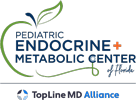Welcoming a new addition to the family is an exciting journey filled with dreams and aspirations. However, it’s crucial for parents to be well-informed about potential health conditions that can affect their child, as well as the available genetic disorder treatment options. One such condition is cleft palate and cleft lip, which can have a significant impact on a child’s life. In this comprehensive guide, we will explore what cleft lip and palate are, their causes, the associated risks, how to prevent cleft lip and palate during pregnancy, and the available treatments.
What Is a Cleft Lip?
A cleft lip is a congenital condition characterized by a split or opening in the upper lip. This separation occurs when the facial structures that form the lip do not properly fuse together during the development in the womb. The severity of a cleft lip can vary, ranging from just a notch in the lip to a more extensive opening that extends into the nose.
What Is a Cleft Palate?

Cleft palate, on the other hand, refers to an opening or a gap inside the mouth. This condition arises when the tissues in that area do not fully fuse together during pregnancy. Similar to a cleft lip, the severity of a cleft palate may range from a tiny opening at the back of the mouth to a large separation that extends toward the front.
Who Can Get This Condition?
Cleft palate and lip can occur in babies of all ethnic backgrounds. However, certain factors increase the likelihood of their development, including family history, genetic factors, and environmental influences. It’s important to note that these conditions can affect both males and females.
How Can This Condition Affect the Child?
A cleft palate and lip can have several implications for a child’s health and well-being. Difficulties with feeding, speech, hearing, and dental problems are common challenges kids born with these conditions face. Additionally, the social and emotional impact on a child’s self-esteem should not be underestimated. However, with appropriate medical intervention and support, these challenges can be addressed effectively.
What Causes a Cleft Lip and Palate?
We still don’t know what causes a cleft lip and palate entirely. However, research suggests that a combo of environmental and genetic factors contributes to their development. Genetic predisposition, maternal smoking, certain medications, and inadequate prenatal nutrition are some of the factors that may increase the risk.
The Diagnosis of This Condition
Cleft palate and cleft lip are often diagnosed during routine prenatal ultrasounds or shortly after birth. Skilled healthcare professionals can visually assess the presence of a cleft lip or palate, allowing for early intervention and planning for treatment and support.
How to Prevent Cleft Lip and Palate During Pregnancy?
While not all cases of cleft palate and lip can be prevented, there are measures expectant parents can take to minimize the risk. Maintaining a healthy lifestyle, including proper prenatal nutrition, avoiding tobacco and alcohol, and discussing medication usage with healthcare providers, can all contribute to reducing the likelihood of these conditions.
What Health Issues Are Linked to This Condition?
In addition to the challenges with feeding and speech mentioned earlier, individuals with cleft lip and palate may experience ear infections, hearing loss, dental issues, and more severe speech difficulties. Regular check-ups with a multidisciplinary team of healthcare professionals, including pediatricians, otolaryngologists, dentists, and speech therapists, can help manage these potential complications effectively.
How Does a Cleft Palate Increase the Risk of Having Hypopituitarism?
Hypopituitarism, a condition characterized by inadequate hormone production by the pituitary gland, has been associated with cleft palate. The connection between cleft palate and hypopituitarism lies in the anatomical proximity of the pituitary gland to the palate during fetal development. In some cases, the incomplete fusion of the palate can result in abnormal development or positioning of the pituitary gland, leading to disruptions in hormone production.
The pituitary gland plays a crucial role in regulating various hormonal functions in the body, including growth, metabolism, reproduction, and stress response. When the pituitary gland is affected by the structural abnormalities associated with cleft palate, it can impact the secretion and balance of essential hormones.
Children affected by this condition may be at a higher risk of developing hypopituitarism due to the potential interference with the pituitary gland’s normal development. Hormonal deficiencies resulting from hypopituitarism can manifest differently, depending on the specific hormones affected. Common symptoms include growth delays, short stature, delayed puberty, weight gain or difficulty maintaining a healthy weight, fatigue, and impaired fertility.
It’s important to note that not all children suffering from cleft palate will develop hypopituitarism, and the occurrence of this condition is relatively rare. However, close monitoring by healthcare professionals is crucial to detect any hormonal imbalances early on and initiate appropriate interventions and treatments. You can count on professionals at PEMC of Florida for all endocrinologic and metabolic matters regarding your child’s health.
The Treatment Options Available
The treatment for cleft palate and cleft lip usually involves a series of surgical procedures tailored to each individual’s specific needs. The primary goal of these surgeries is to restore proper form and function to the affected areas.
Cleft lip surgery is typically performed within the first few months of life. The procedure involves:
- Surgically closing the separation in the lip.
- Carefully aligning the tissues.
- Reconstructing the natural contours of the upper lip.
Skilled plastic surgeons utilize various techniques to achieve optimal results and minimize scarring.
Cleft palate surgery is usually performed around 9 to 18 months of a child’s age, depending on their overall health and development. The cleft palate surgery involves closing the mouth gap, reconstructing the muscles and tissues, and restoring proper function for swallowing, speech, and dental health.
Subsequent surgeries may be necessary as the child grows to address any additional concerns, such as dental alignment or speech issues. The specific treatment plan and timeline will be determined by the child’s healthcare team, taking into account the individual needs and progress of each case.
What Is the Outlook for the Affected Kids?

With timely intervention, appropriate medical care, and ongoing support, the outlook for children with cleft lip (and cleft palate) is generally positive. Surgical procedures can effectively correct structural abnormalities and improve functional outcomes, allowing children to lead fulfilling lives.
However, it’s essential to recognize that the management of cleft palate and lip is not solely limited to surgical interventions. Ongoing comprehensive care, including speech therapy, dental care, hearing assessments, and psychosocial support, is vital to address the potential challenges and ensure optimal development and well-being for the child.
The Bottom Line
Cleft palate and cleft lip are complex congenital conditions that require a multidisciplinary approach to management and treatment. While the exact causes may not be fully understood, awareness of the associated risks, early diagnosis, and proactive intervention can significantly improve outcomes for children and their families.
Through a collaborative effort involving healthcare professionals from various specialties, parents can access the necessary support and resources to navigate the journey of raising a child with this condition. With advancements in surgical techniques, speech therapy, and other related fields, the prospects for children with these conditions have greatly improved over the years.


